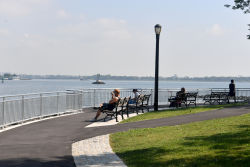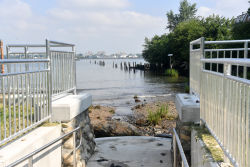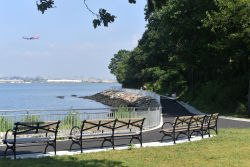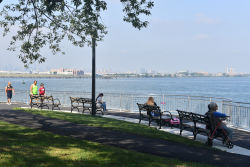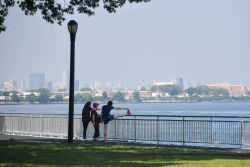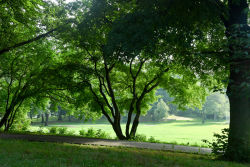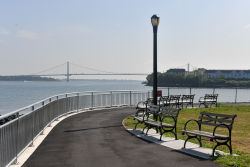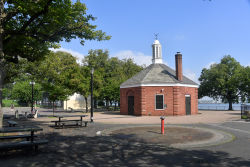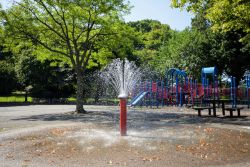Hermon A. MacNeil Park
Hermon A. Macneil Park
What was here before?
The Matinecock lived on this peninsula before the Dutch granted English merchant and enslaver William Lawrence (1622-1680) a patent in 1645. The property remained in his family for centuries before being sold off.
In 1835 Reverend William Augustus Muhlenberg purchased 134 acres of land in this area for a new Episcopal seminary. The financial Panic of 1837 and conflicts within the Episcopal Church upended the original plans. Muhlenberg’s sister, Mrs. John Rogers, purchased most of the property and a partially-built stone building. She completed the mansion, located on the highest point on the property, as her summer home. A scaled-back version of St. Paul’s College, for which College Point is named, opened in 1839 and closed about ten years later.
Mrs. Rogers gifted the property to her daughter Mary in 1848 when she married William F. Chisolm (also written Chisholm), a former St. Paul’s student and real estate developer. The young couple moved into the stone mansion, which remained in the family for decades.
How did this site become a park?
In 1930 the City of New York acquired the mansion and its grounds from the Chisolm family for a public park, College Point Shore Front Park, later known as Chisolm Park. A playground opened on site in 1935. Two years later, Mayor Fiorello LaGuardia (1882-1947) made the Chisolm mansion his summer City Hall, conducting his municipal business in July and August on the shores of the East River. Parks Commissioner Robert Moses (1888-1981) noted, “[The mansion] gave us endless trouble after that, and there proved to be no way within our means of making it either useful or ornamental, so we are tearing it down,” and it was razed between 1939 and 1941. Today, a flagpole marks the site of the old mansion.
This green space features waterfront views, kayak and canoe launches, handball and basketball courts, and a playground. In 2019 NYC Parks reconstructed over a quarter mile of the waterfront esplanade.
Who is this park named for?
Hermon A. MacNeil (1866-1947) was a renowned American sculptor known for designing the Standing Liberty quarter and sculpting the east pediment of the United States Supreme Court Building.
On the centennial of MacNeil’s birth, in 1966 Mayor John V. Lindsay signed his first local law that renamed the park for MacNeil, who lived and worked in College Point. Born in Everett, Massachusetts, MacNeil graduated from Massachusetts Normal Art School and became an instructor at Cornell University. In 1900, he moved to College Point, a short distance from what would become the park. He was on the board and oversaw the art department of the Poppenhusen Institute, a historic vocational school and organization still in operation. One of his important works,The Moqui Prayer for Rain, is in the Metropolitan Museum of Art’s collection. His sculptures can be seen in four of New York City’s five boroughs, including Washington as Commander-in-Chief at the base of the Washington Square Arch in Manhattan; a cast of his Sun Vow in the Pratt Institute in Brooklyn; the Flushing War Memorial in Queens; and four busts in the Hall of Fame of Great Americans at Bronx Community College. MacNeil died on October 2, 1947 in College Point.
Check out your park's Vital Signs
Clean & Safe
Green & Resilient
Empowered & Engaged Users
Share your feedback or learn more about how this park is part of a
Vital Park System

